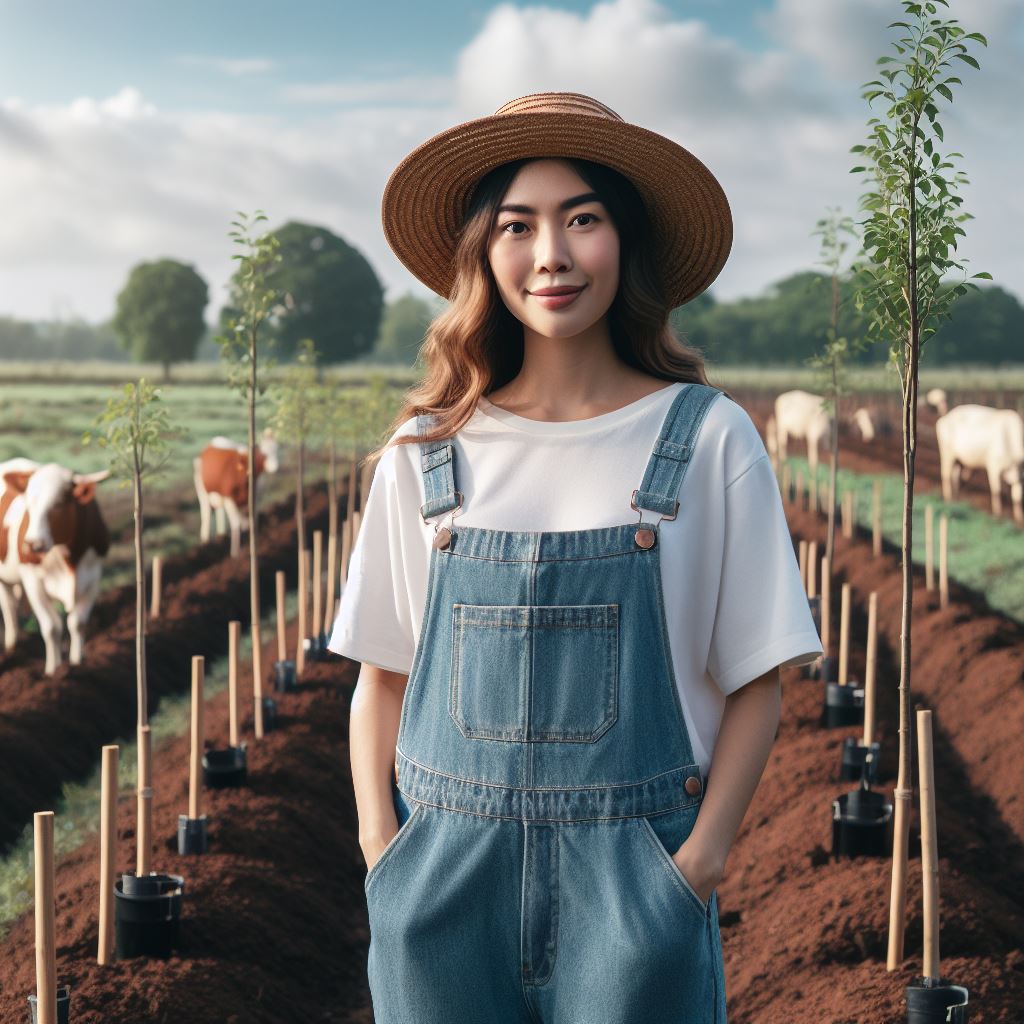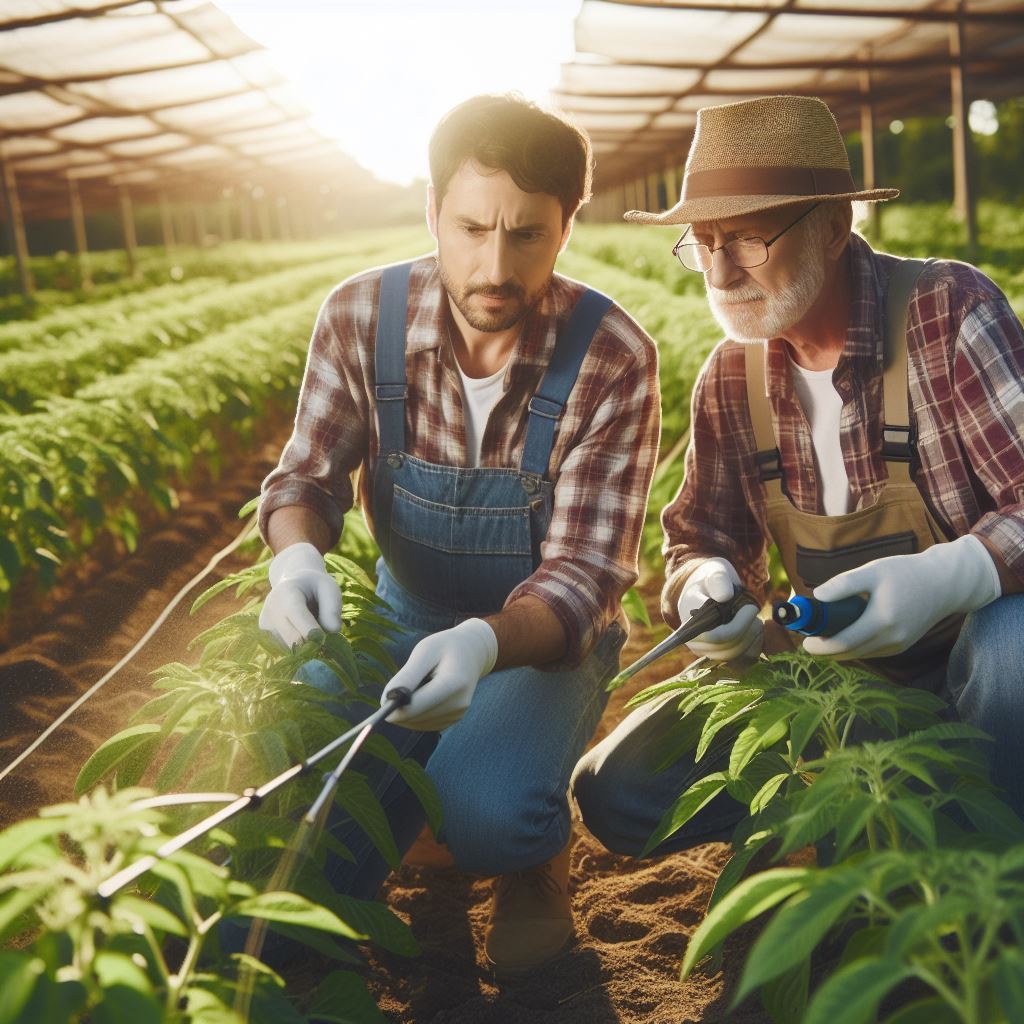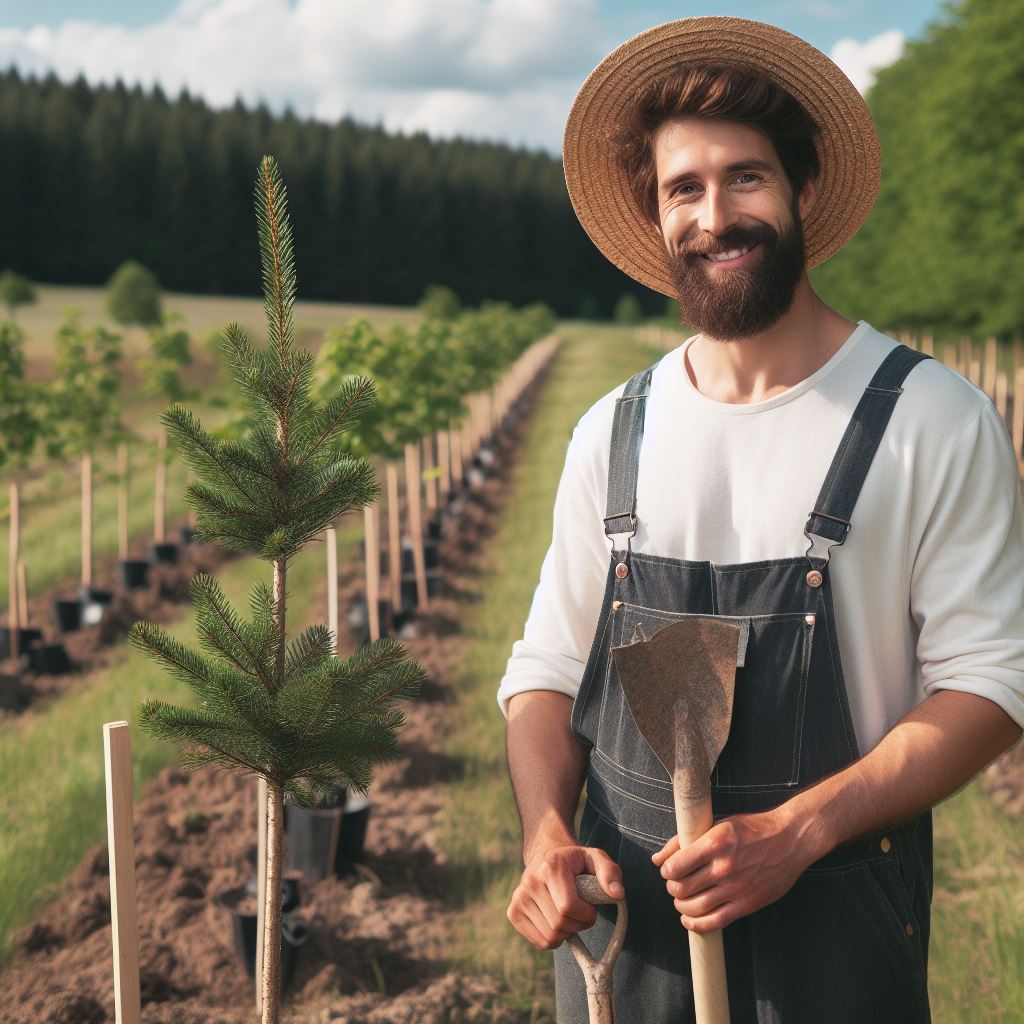Introduction
Permaculture design is an approach that integrates various disciplines to create sustainable and regenerative systems.
It focuses on designing landscapes, buildings, and systems that mimic natural ecosystems and maximize resource efficiency.
Water conservation is a fundamental aspect of permaculture design, as water is a precious resource that should be used wisely.
By implementing water conservation techniques, we can minimize waste, ensure the availability of water for various uses, and support the overall health of the environment.
The importance of water conservation in permaculture design cannot be overstated.
In a world where water scarcity is becoming increasingly prevalent, it is crucial to prioritize water conservation in our everyday lives.
By conserving water, we can reduce our water footprint, decrease pollution, and help mitigate the effects of climate change.
The purpose of this blog post is to delve into the various strategies and techniques that can be employed to conserve water in permaculture design.
From capturing and storing rainwater to implementing efficient irrigation methods, we will explore practical tips and actionable steps that can be taken to minimize water usage and preserve this valuable resource.
In subsequent sections, we will discuss the importance of soil management, plant selection, and landscape design in water conservation efforts.
By the end of this blog post, readers will have a comprehensive understanding of how water conservation can be incorporated into permaculture design, enabling them to make informed decisions and create sustainable, water-wise systems.
Understanding Water in Permaculture Design
Overview of water management in permaculture
Water management is a critical aspect of permaculture design that focuses on efficiently utilizing water resources.
Principles of permaculture water design
- Catch and store water: Implement systems to capture rainwater and store it for later use.
- Use and value renewable resources and services: Prioritize utilizing natural, sustainable water sources.
- Integrate water into the landscape: Design landscapes that maximize water absorption and minimize runoff.
- Create a closed-loop system: Recycle and reuse water within the permaculture system to minimize waste.
Benefits of incorporating water conservation in permaculture design
There are numerous advantages to integrating water conservation practices into permaculture design:
- Resource efficiency: By efficiently managing water, permaculture systems can minimize water waste and optimize usage.
- Drought resilience: Water conservation strategies help permaculture designs cope with dry periods and drought conditions.
- Ecosystem support: Proper water management contributes to the health and sustainability of surrounding ecosystems.
- Cost savings: Reducing water consumption decreases water bills and operating costs for permaculture systems.
- Increased productivity: Adequate water availability ensures optimal growth for plants, resulting in higher yields.
In short, understanding water in permaculture design is crucial for creating sustainable and efficient systems.
By following the principles of permaculture water design and incorporating water conservation practices, permaculture enthusiasts can reap the benefits of a resource-efficient and resilient ecosystem.
Transform Your Agribusiness
Unlock your farm's potential with expert advice tailored to your needs. Get actionable steps that drive real results.
Get StartedRead: Eco-Farming: Sustainable Practices Overview
Key Strategies for Water Conservation
Water conservation is a crucial aspect of permaculture design. By implementing key strategies, individuals can minimize water wastage and create a sustainable water management system.
This section explores various methods that can be employed to conserve water effectively.
Rainwater harvesting
Rain barrels can be installed to collect and store rainwater, which can later be utilized for gardening, cleaning, and other non-potable purposes.
Another technique is constructing swales and contouring the land to slow down and capture rainwater, preventing runoff.
Greywater recycling
Greywater systems can be integrated into the permaculture design to reuse water from sinks, showers, and washing machines.
By treating and filtering the greywater, it can be safely utilized for irrigation, reducing the demand for freshwater resources.
Mulching and soil improvement
Mulching techniques help retain moisture in the soil and reduce evaporation.
Organic materials, such as straw or wood chips, can be spread around plants to create a protective layer.
Additionally, improving soil water retention can be achieved by adding organic matter and increasing soil porosity, allowing for better absorption and storage of water.
Designing efficient irrigation systems
Drip irrigation systems are highly efficient as they deliver water directly to the roots of plants, minimizing water loss through evaporation and runoff.
Using efficient sprinklers and timers ensures that water is distributed evenly and only when necessary, reducing water waste.
Implementing these strategies allows permaculture enthusiasts to promote water conservation and create a self-sustaining ecosystem.
By harnessing rainwater, reusing greywater, and optimizing irrigation techniques, individuals can significantly reduce their reliance on freshwater sources and contribute to a more sustainable future.
In essence, water conservation is a vital component of permaculture design.
Through the adoption of key strategies like rainwater harvesting, greywater recycling, mulching, and efficient irrigation systems, individuals can actively contribute to preserving this precious resource.
By prioritizing water conservation in permaculture design, we can create a more resilient and sustainable environment for future generations.
Read: Permaculture 101: Key Principles Explained
Case Studies: Successful Water Conservation in Permaculture Design
Example 1: Permaculture Farm Case Study
Design elements related to water conservation
In this case study, we will explore a successful permaculture farm that prioritizes water conservation.
The design elements related to water conservation on the farm were carefully planned and implemented.
Rainwater harvesting systems were installed to capture and store rainwater for future use.
This helped reduce the dependency on external water sources such as wells or rivers.
Additionally, contour swales were created across the landscape to slow down water flow and allow it to infiltrate the soil, preventing runoff.
These swales also helped in retaining moisture and reducing soil erosion.
Showcase Your Farming Business
Publish your professional farming services profile on our blog for a one-time fee of $200 and reach a dedicated audience of farmers and agribusiness owners.
Publish Your ProfileMulching techniques were employed to prevent evaporation and conserve soil moisture.
Mulch acts as a protective layer on the soil surface, reducing water loss through evaporation and maintaining an ideal environment for plant growth.
Impacts and benefits observed
The impacts and benefits observed on the farm were significant. The implementation of water conservation measures resulted in a noticeable reduction in water runoff from the property.
This not only conserved water but also prevented soil erosion, which is a common issue in agricultural practices.
The improved water retention in the soil due to the contour swales and mulching techniques had a positive impact on plant growth.
Plants were healthier, with improved yields and increased resistance to drought conditions.
The farm also experienced a decrease in irrigation needs, saving both water and energy.
Example 2: Urban Permaculture Garden Case Study
Challenges faced in conserving water in an urban setting
Now let’s explore a case study of an urban permaculture garden that successfully incorporates water conservation techniques in a limited space.
In an urban setting, conserving water can be challenging due to limited space and high water demand.
Creative solutions implemented to conserve water
However, creative solutions were implemented in this permaculture garden to overcome these challenges.
One of the main challenges faced was the limited space available for water storage. To address this, the garden utilized vertical gardening techniques.
Vertical gardens maximize space by growing plants vertically on walls or trellises, reducing the footprint needed for gardening while still allowing for a diverse range of crops.
Drip irrigation systems were installed to ensure precise water delivery to individual plants, minimizing water waste.
These systems provide water directly to the roots, reducing evaporation and ensuring maximum water efficiency.
The garden incorporated an innovative solution by recycling greywater.
Greywater, sourced from sinks or showers, was gathered and treated for recycling in the garden.
This reduced the dependence on freshwater sources for irrigation, conserving water resources.
By implementing these creative solutions, the urban permaculture garden successfully conserved water while still producing abundant and diverse crops.
It showcased the attainability of sustainable water practices in a demanding urban setting.
In general, these case studies exemplify the successful implementation of water conservation measures in permaculture design.
Whether in a farm or an urban garden, utilizing design elements such as rainwater harvesting systems, contour swales, mulching techniques, drip irrigation systems, vertical gardening, and greywater recycling can lead to significant benefits.
Implementing these practices not only conserves water but also improves plant health, reduces irrigation needs, and minimizes soil erosion.
Water conservation in permaculture design is a crucial aspect of sustainable agriculture and urban gardening.
Read: Wind Farms in Agriculture: A Guide

Tips and Best Practices for Water Conservation in Permaculture Design
Achieving water conservation in permaculture design is crucial for maintaining sustainable practices and ensuring a healthy ecosystem.
Here are some tips and best practices to follow:
Regular Monitoring and Assessing Water Use
- Regularly monitor and record water consumption to identify areas of improvement.
- Install water meters to understand the amount of water used for different purposes.
- Analyze data to pinpoint excessive water usage and develop strategies to reduce it.
- Create a water use plan that aligns with the principles of permaculture design.
- Implement efficient irrigation systems to minimize water wastage.
Implementing Water-Efficient Technologies and Design Elements
- Install rainwater harvesting systems to collect and store water for later use.
- Utilize graywater systems to recycle water from household activities such as laundry or dishwashing.
- Design landscapes with swales and contour lines to capture and retain rainwater.
- Create mulch beds around plants to minimize evaporation and retain moisture in the soil.
- Integrate water-efficient native plants adapted to local climate conditions.
Educating and Involving the Community
- Organize workshops and training sessions to raise awareness about water conservation in permaculture.
- Encourage community participation through educational programs on sustainable water practices.
- Establish community gardens where individuals can learn about water-wise gardening techniques.
- Partner with local schools to educate students about the importance of water conservation.
- Collaborate with community members to create shared water-saving initiatives.
Seeking Expert Advice and Joining Permaculture Networks
- Consult with water conservation experts to assess the efficiency of your permaculture design.
- Seek advice on choosing the appropriate water-saving technologies and design elements.
- Join permaculture networks and forums to exchange ideas and gain insights from experienced practitioners.
- Participate in permaculture workshops and conferences to stay updated on the latest water-saving techniques.
- Collaborate with like-minded individuals to implement collective water conservation projects.
In a nutshell, achieving water conservation in permaculture design requires a proactive approach that involves monitoring, implementing efficient technologies, educating the community, and seeking expert advice.
By following these tips and best practices, we can create sustainable systems that preserve our precious water resources and support the health and resilience of our environment.
Read: Farming and Solar: A Perfect Match
Conclusion
Water conservation is vital in permaculture design as it ensures the sustainable use of this precious resource.
By implementing strategies such as mulching, swales, and water catchment systems, we can minimize water waste and create a self-sufficient ecosystem that relies less on external water sources.
As we conclude our discussion on water conservation in permaculture design, it is crucial to remember that every drop counts.
By actively considering and implementing water conservation techniques, we not only save our environment but also create a more resilient and productive permaculture system.
Start small, educate yourself, and show others the importance of water conservation in designing a sustainable future.




